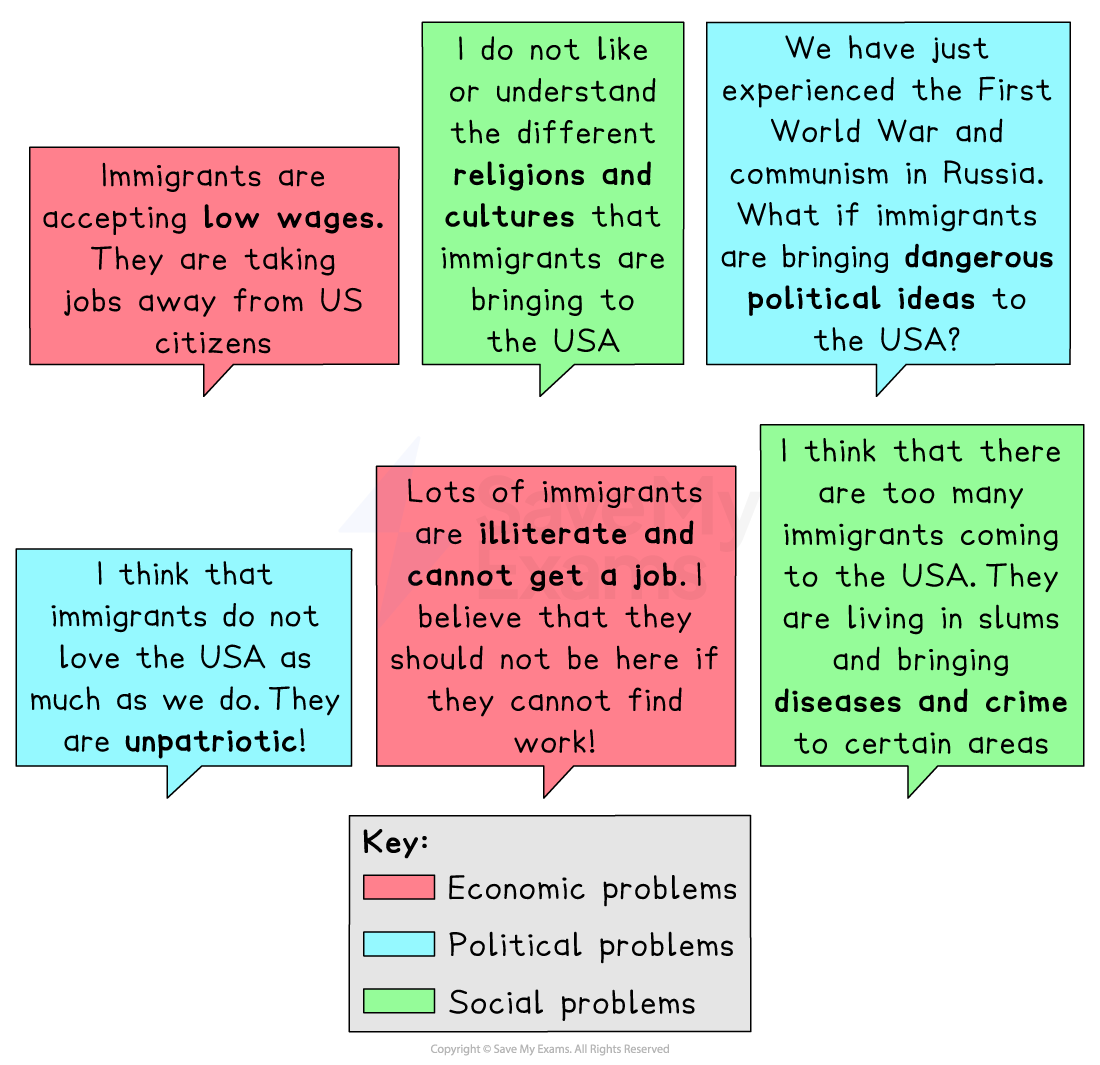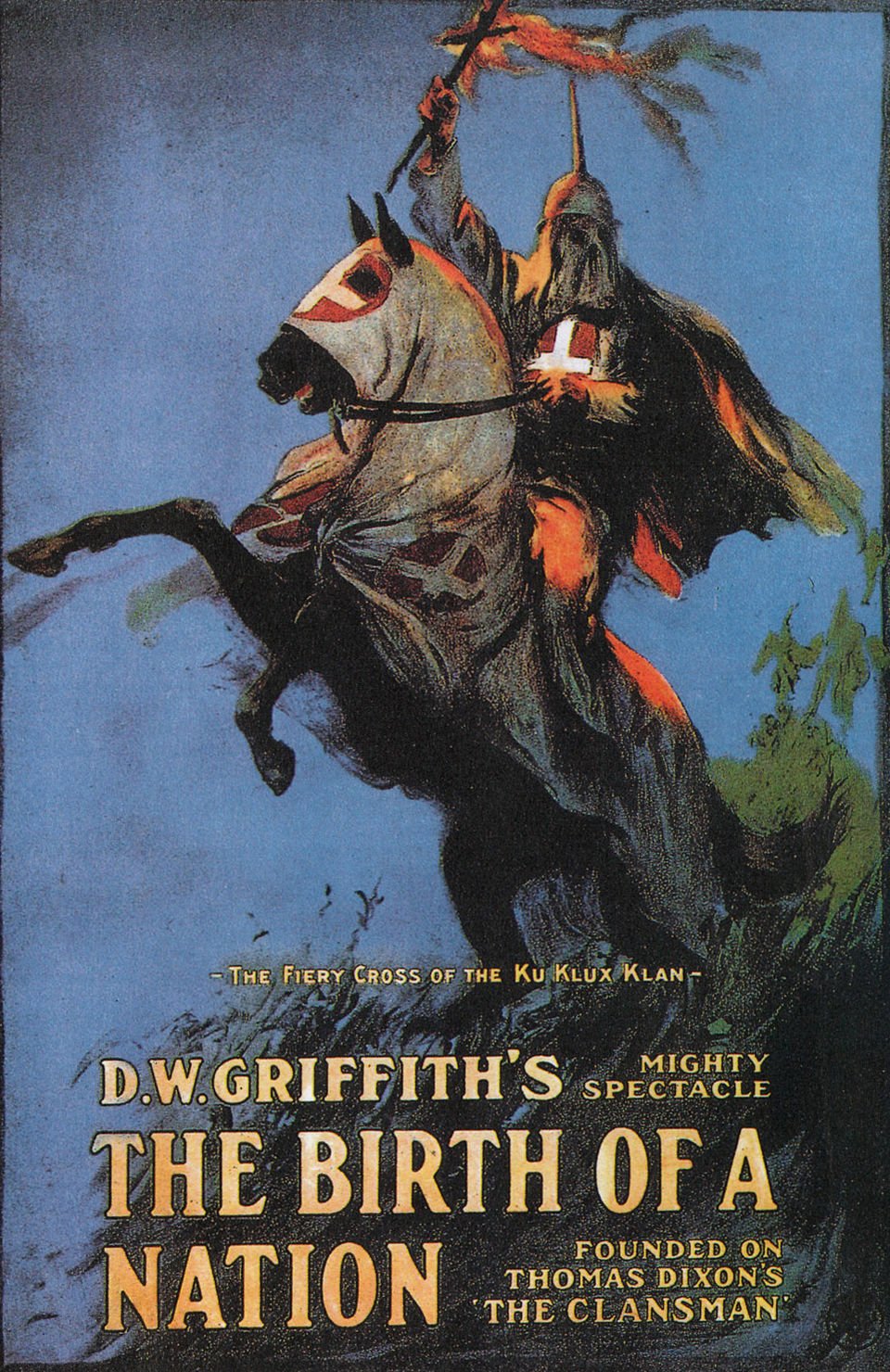What was America Like in 1919? (Cambridge (CIE) IGCSE History): Revision Note
Exam code: 0470 & 0977
Summary
American society was undergoing several significant changes in 1919. The First World War led to a significant improvement in the US economy, but that had come to a sudden end when peace was declared in November 1918. This coincided with attempts by American politicians to end the mass immigration to the US that had been happening for over 50 years. Around 40m people had arrived in the US during that time, and this had increased racial tensions. This, in turn, led to the passing of several laws intended to stop migration to the US. It also led to an enormous increase in the popularity and membership of the racist Ku Klux Klan (KKK) organisation.
Impact of the First World War
The First World War had both positive and negative impacts on the people of the United States
Positive impacts
Enormous industrial growth by supplying the Allies with weapons, food and other supplies
Loans given to other nations helped increase the country’s wealth when they were paid back
New York replaced London as the world’s financial centre
Negative impacts
Inflation during and after the war caused large increases in the cost of living
Many soldiers returning from the war struggled to find jobs
Veterans were not helped by the government to reintegrate with society
The employment surge experienced during the War disappeared once peace was declared
The drop in demand led to a drop in employment, both in factories and on farms
Immigration into the US
Between 1850 and 1914, approximately 40m people emigrated to the United States
Most of the immigrants came from Southern and Eastern Europe
It was the largest recorded movement of people in history
The arrival of millions of immigrants angered many Americans
In the 1600s, their ancestors had emigrated to America from North-Western Europe
They became known as White Anglo-Saxon Protestants or WASPs

The fears, frustrations and prejudices of the WASPs led to a number of laws being passed that were designed to limit migration to the US
Laws to limit immigration to the US
1917 Immigration Law
All immigrants had to prove that they could read English
Immigrants from Asia were not allowed to enter the US
Each immigrant had to pay an immigration fee of $8
1921 Emergency Quota Act
The number of immigrants from the eastern hemisphere could not be more than 3% over the number of migrants from this region already living in the US by 1910
The maximum number of immigrants entering the US each year was set to 357,000
1924 Reed–Johnson Act
The maximum number of immigrants entering the US in any year was reduced to 154,000
The quota from the eastern hemisphere was reduced to 2% of those already in America in 1890
Racial tensions in the US
Millions of Africans were enslaved and transported to the US from the 17th century onwards
Once in the US, they were bought and sold and forced to work for White slave owners
Although slavery was abolished in the US in 1865, it left a legacy of racial tension
Tensions were worst in the South, where most of the large cotton and tobacco farms that used slave labour had been located
White Americans were in the minority in these states, but White politicians passed the Jim Crow Laws, which discriminated against Black Americans
These laws forced Black Americans to use different schools, libraries, swimming pools, taxis, etc from White Americans
They also prevented many Black Americans from voting by introducing literacy tests that were impossible for uneducated people
Some states also introduced a tax on registering to vote, which most Black Americans could not afford
In the North, tensions had increased due to the arrival of many Black Americans who were trying to escape racial persecution in the South and find job opportunities in the factories
The Black American populations of both Chicago and New York doubled between 1900 and 1920
Although Jim Crow Laws did not exist in the North, racist attitudes did, and many Black Americans:
Struggled to find work
Were paid less than White Americans
Were forced to live in the most deprived areas of town
A resurgence in the popularity of the racist KKK also increased tensions
Its growth in popularity was, in part, down to the 1915 Hollywood movie, The Birth of a Nation

The KKK was a highly secretive organisation, and its members kept their faces covered under white robes whilst in public
It was founded immediately after the abolition of slavery in 1865, but its popularity had declined
The success of The Birth of a Nation led to an enormous revival and a membership of around 5 million people
Although the KKK primarily targeted Black Americans, they were also highly prejudiced against the Jewish and Catholic communities
Worked Example
Describe two ways in which racial tensions affected life in the United States in 1919.
[4 marks]
Answer:
One way in which racial tensions affected life in the United States in 1919 was through the increased popularity of the Ku Klux Klan (KKK). This was a highly secretive and extremely racist organisation which primarily targeted African Americans, and it is thought to have had as many as 5 million members. The KKK sought to uphold the racist Jim Crow Laws.
Another way in which racial tensions affected life in the United States in 1919 was in the increased demands for an end to immigration to America. 1917 had seen the Immigration Law passed, but demands for more action led to the Emergency Quota Act and the Reed–Johnson Act. Both of these acts put specific limits on people from the eastern hemisphere but not from Western Europe.
Examiner Tips and Tricks
Using terms such as WASP or KKK in an exam is fine as long as you use White Anglo-Saxon Protestant (WASP) or Ku Klux Klan (KKK) first.

Unlock more, it's free!
Did this page help you?